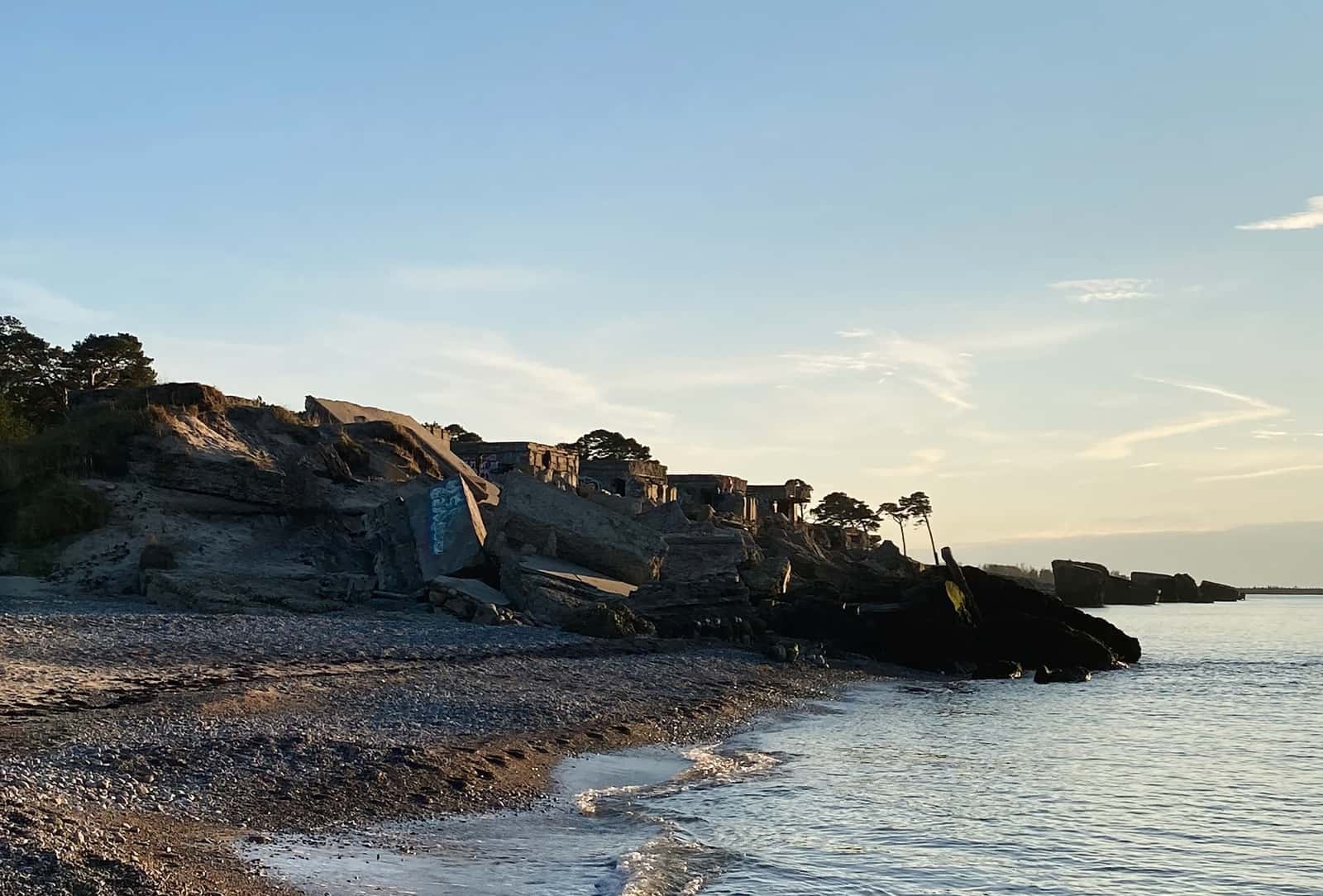

Downloads
DOI:
https://doi.org/10.58981/bluepapers.2024.1.16Published
Issue
Section
License
Copyright (c) 2024 Kristiāna Ustuba

This work is licensed under a Creative Commons Attribution 4.0 International License.
How to Cite
Keywords:
military heritage, ruins, identity, coastal erosion, preservationAbstract
Water often needs protection, but heritage can also require protection from water. The remains of a military fortification complex in the Latvian city of Liepāja are slowly being swallowed by the sea, a case where military heritage meets water heritage. To what extent should these ruins be protected from water and is preservation still possible? Both the coastal defense structures and the sea have been considered symbols of the city, attracting locals and visitors. Yet, over time, the monumental structures have been threatened by environmental challenges triggered by rising sea levels and ongoing coastal erosion. This has led to the deterioration of the structures and the loss of their structural integrity. Although the effects of the natural processes cannot be prevented entirely, they could be delayed. However, the rapidly deteriorating state of the coastal military structures has not resulted in a sense of urgency among local authorities. The article highlights the importance of the military structures in the local context as military, cultural heritage and the water challenges faced by the coastal defense line. It also explores the potential for, and impediments to, the structures’ preservation.
References
Balcere, Ilze. 2008. “Liepāja un simboli” [“Liepāja and its Symbols”]. In Liepāja kā attīstības ceļvedis [Liepāja – the Guide for Development], edited by Antra Legzdiņa, 169–79. Rīga: Zinātne.
Driķe, Nora. 2019. “Brīvības cīņas iedvsmo mākslai” [“Freedom Fights as Inspiration for Art”]. In Kurzemes Vārds [The Word of Courland]. Liepāja: Kurzemes Vārds.
Ginsberg, Robert. 2004. The Aesthetics of Ruins. Amsterdam: Rodopi.
Hirst, Paul Q. 2005. Space and Power: Politics, War, and Architecture. Cambridge: Polity.
Kilevica, Linda. 2018. “Forti turpina sargāt krastu” [“The Forts Continue to Guard the Coast”]. In Kurzemes Vārds [The Word of Courland]. Liepāja: Kurzemes Vārds.
Kim, Nam C. 2013. “Cultural Landscapes of War and Political Regeneration.” Asian Perspectives 52, no. 2 (September): 244–67. https://doi.org/10.1353/asi.2013.0015.
Mitchell, Katharyne. 2003. “Monuments, Memorials, and the Politics of Memory.” Urban Geography 24, no. 5: 442–59. https://doi.org/10.2747/0272-3638.24.5.442.
Šķietniece, Ilze. 2023. “Populāri, apdraudēti, neaprūpēti. Ziemeļu Forti jūras krasta erozijas ietekmē strauji pazūd ūdenī” [“Popular, Endangered, Uncared for: The Rapid Disappearance of the Northern Forts in the Sea Due to Coastal Erosion”]. In Liepājas Vēstules [Letters of Liepāja]. Liepāja: Kurzemes Vārds.
Treib, Marc. 2009. Spatial Recall: Memory in Architecture and Landscape. London: Routledge.
Zeltiņa, Māra. 2008. “Padomju armijas pēdas” [“Traces of the Soviet Army”]. In Liepāja kā attīstības ceļvedis [Liepāja – the Guide for Development], edited by Antra Legzdiņa, 233–40. Rīga: Zinātne.


